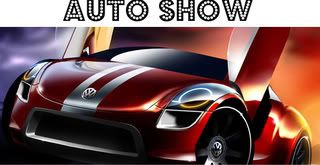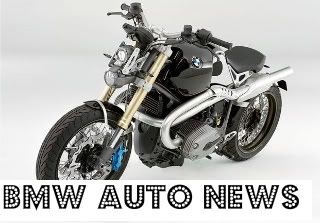
While Testarossas might bring back memories of the 1980s, Miami Vice and a mid-engine Ferrari with massive side strakes, it's this 1958 model which holds a more important place in Ferrari history. Not only was the 250 Testa Rossa (TR) a success on the track, but it also had unorthodox body by Scaglietti & C.
Developed for the 1958 season, the 250 Testa Rossa was designed for both the factory team called Scuderia Ferrari and private entrants. Engine choice was the most critical factor since the Commissione Sportiva Internazionale (CSI) had limited engine size to 3.0 in an attempt to slow high speeds. Ferrari had two choices best suited for their new sports car that were tested in 1957. Both a V6, and a small version of the quad-cam V12 were tried in two special prototypes, but neither of these were chosen. Instead, the SOHC V12 was used which had already proved its reliability powering the 250 GT Berlinetta to consecutive Tour de France victories.
Synthesis of the Columbo V12 and 500 TR chassis made up the 250 Testa Rossa underpinnings. These components were preferred over the complex quad camshaft and dual ignition solutions found in the 335 which were also much heavier. But, the 250 Testa Rossa was really much more than the combination of existing engineering. It introduced a design philosophy that focused on reliability over outright performance. Ferrari wanted to sell consistent cars that could endure for 24 hours.
After modifying chassis 0666TR and 0704TR during the 1957 season with various 250GT, 290MM, 335 or 500TR parts, a final specification was reached. Ferrari announced the 250 Testa Rossa at their pre-season press conference held in November 1957. The car was intended for independent customers who raced at America's SCCA races and the CSI's World Sportscar Championship. As factory involvement was limited to the larger races, private entrants were left to contend the SCCA and smaller European events.
As released, the 250 Testa Rossa had seemingly modest engineering. The drum brakes or 250 engine were indeed old technology compared to the disc brakes and DOHC setups that were available. Also, compared other cars of the era, the Testa Rossa chassis was made more bulky to take on many of the ditches and walls which these cars met. Such throw backs followed the original design philosophy and helped the Testa Rossas endure to win many races.
All the customer cars featured a chassis similar to the 500 TR (Testa Rossa) which retained the live-axle rear end. Another common feature was the remarkable 'pontoon' bodywork designed by Sergio Scaglietti and his firm at Scaglietti & C. Under the leadership of Gian Carlo Guerra, the company worked without drawings, instead going straight to a wire framework. The result used a nose similar to the period F1 cars with cutaway fenders sometimes called sponsons. The idea was to expose the large brake drums to aid in cooling. Unfortunately, this body, while striking and exciting, was unstable at high speeds. To fix the aerodynamics, Ferrari modified it to feature bodywork that was a fully enclosed design.
At this point is important to mention the superior factory Testa Rossas which Ferrari ran and distinguish them from the customer cars which Ferrari sold. After the first few races, it was apparent to Ferrari that they had to upgrade the Testa Rossa if they were to win the CSI's Sports Car Championship. The team cars were upgraded to include a De Dion rear axle and an all enveloping body.
Both the customer and works Testa Rossas used the Tipo 128 engine, with 290MM camshafts, high-compression pistons and larger bearings to produce 300 bhp. Having a single cylinder displacement of 250cc and bright red valve covers, it's this potent engine which the car is named after.
Racing
During the 1958 season, Ferrari entered factory works cars in the most important races. These cars racked up championship points in the CSI's World Sportscar Championship. Four cars, including prototypes #0666 and #0704, were used by Ferrari which were modified in several ways throughout the season. The two other cars were chassis #0726 and #0728 and, like the prototypes, had De-Dion type rear suspensions. These four cars were called TR58s, but each had individual specification.
Most of the Testa Rossa's success in 1958 can be attributed to the factory works effort and a lack of competition in the new 3.0 liter class. Factory drivers Luigi Musso, Mike Hawthorn, Peter Collins, Wolfgang Von Trips, Phil Hill, Oliver Gendebien and Wolfgang Seidel usually ran alongside several privateers which meant that Ferrari outnumbered the competition at every major race.
Ferrari easily won the opening rounds at Buenos Aires and the Sebring 12-Hour. Back in Europe there was more competition, but Luigi Musso and Oliver Gendebien still won the Targa Florio in their TR58.
At the Nürburgring 1000kms Ferrari was surprisingly beaten. In Germany the much more complicated and powerful Aston Marin DBR1 became the Testa Rossa's main rival. With seven Ferraris present, Stirling Moss and Jack Brabham beat the factory works Ferraris. Ferrari blamed the inferior fuel, but it wouldn't be the last time Ferrari would see defeat to Aston.
After the Nürburgring Ferari had alread clinched the Manfacturer's Championship, but the all important Le Mans 24-Hour race was still on the calendar. Scuderia Ferrari won with Olivier Gendebien and Phil Hill driving a TR58, but the third-placed Porsche 718 RSK was a sign of things to come from Porsche.
AIt is important to mention the Testa Rossa as it applied to American SCCA racing. Many of the customer cars ran short tracks of America, sometimes winning class victories, but they were up against large v8-powered specials such as the Listers and Scarabs that were more suited for sprinting. Also, due to the lack of support in America, many broken engines couldn't be fixed and some Testa Rossas some were stuffed with V8 engines.
After winning Le Mans, Ferrari had secured the Manufacturers Championship and eased off sportscar racing to focus on F1. Ferrari ceased delivery of the customer Testa Rossas in 1958, leaving a limited production of 19 cars plus the prototypes. However, they continued development of the factory-backed works cars which achieved so much success in the preceding seasons. Ferrari knew they needed to improve the Testa Rossa if it was to keep pace with the increasing Aston Martin DBR1 threat. By 1959, Ferrari released a heavily refined TR59 with work from Fantuzzi and Pinin Farina. But was it good enough?
Chassis & Sales.
0714TR-Finished in white, this chassis was sold to Piero Drogo who modified it to include scoops below the rear doors to aid with brake cooling. he raced trouble-free at the Buenos Aires 1000 kms with Sergio Gonzalez. The car stopped by the GP Cuba before coming back to Europe and to be resprayed red for 1958 championship races. Afterwards is was sold to Alan Connell for a full season in the 1959 SCCA season. Painted Black with a red nose it won many times in the DM class. Wayne Burnett picked it up from there for the subsequent 1960/61/62/63 seasons in the states. In 1962 the brakes were updated to discs.
At their 2009 Leggenda E Passione Aucion RM will offer 0714TR. Before the sale the car was painted back in black and after nearly 50 years the disc brakes were replaced by drums. It is described as "stunning – like a great sculpture it begs to be touched. Its incredible racing history puts the car far beyond most other 250 Testarossas, if such a thing can be said. This car would be welcomed with open arms to all the great historic race meetings and events around the globe. As these cars rarely come to market, the Testarossa is one of the most coveted in the marque’s history. With breathtaking looks, fantastic performance and handling, this is a true connoisseur’s Ferrari."





0 comments:
Post a Comment